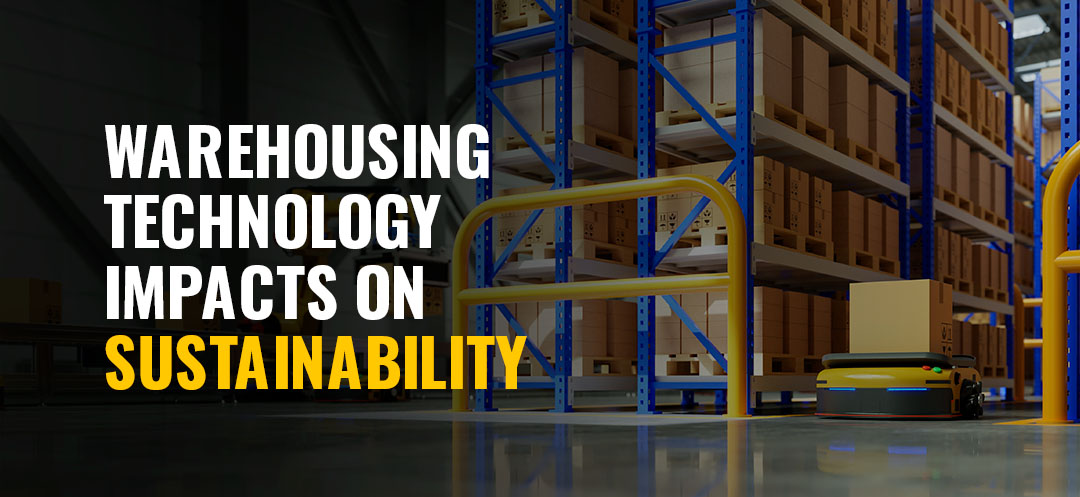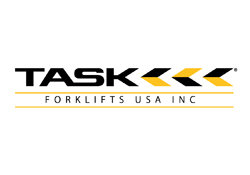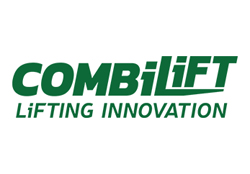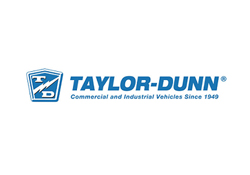
As a warehouse owner or operations manager, you’re likely already aware of the pressure to keep your operations efficient and environmentally sustainable. Balancing sustainable practices with the need for profitability can feel challenging.
However, warehouse automation can improve operational efficiency while reducing environmental impact. These systems reduce the costs associated with repetitive tasks, contain energy-efficient features that decrease energy consumption and can help you streamline inventory management.
What Is Sustainable Warehousing?
Sustainable warehousing is the practice of adopting eco-friendly strategies to minimize environmental impacts while maintaining efficiency. This includes reducing energy consumption, optimizing space usage and using technology that supports sustainable goals.
The components of sustainable warehousing include the following:
- Energy efficiency: Replacing traditional lighting with LED, installing solar panels or wind turbines.
- Reducing waste: Adopting circular economy practices, implementing recycling programs, using biodegradable packaging or digital inventory systems.
- Space optimization: Creating smarter layouts and vertical storage solutions.
- Green supply chains: Sourcing materials from suppliers that practice responsible forestry or use renewable energy.
- Water conservation: Using recycled water for nonpotable purposes and monitoring water usage.
- Automation technology: Using automated systems to operate more precisely and consistently.
Advantages of Automated Warehouses for Sustainability
Automating a warehouse offers numerous sustainability benefits, such as:
1. Promotes Energy Efficiency and Cost Savings
Automated systems, like robotic conveyors and intelligent lighting, are programmed to operate only when needed. This helps warehouse owners avoid the constant energy drain associated with manual systems. For example, energy-efficient motors in robotic systems can save about 50% more energy than traditional equipment. Furthermore, smart technologies like motion-sensor lighting ensure resources are used only in active areas to reduce unnecessary energy use.
Using smart devices and integrating solar panels to power automated operations can help warehouse owners cut down on their utility bills.
2. Minimizes Waste and Improves Inventory Management
Waste typically stems from manual errors in inventory management, packaging and order fulfillment. Automation addresses these challenges by improving accuracy and precision. Robotic picking systems can reduce errors and eliminate waste from mispicks or incorrect shipments. Automated inventory tracking ensures optimal stock levels to prevent workers from overordering and the associated disposal of expired or unsellable products.
3. Allows for Scalability
As your warehouse grows, automation systems can scale to meet increasing demands without significantly increasing utility costs or labor expenses. Automated systems can handle higher volumes without the need for significant infrastructure expansions.
This scalability helps future-proof your warehouse and ensures your sustainability efforts continue to pay off as your business expands. You can adjust and expand automated systems as needed rather than investing in additional physical space or hiding more workers to handle growing demand.
4. Maximizes Space Use and Reduces Carbon Emissions
Warehouses with limited space may resort to expansion, leading to increased land and energy use. Automation changes this dynamic by enabling the smarter use of existing space. Using automated storage and retrieval systems allows warehouses to store goods vertically, increasing storage capacity without requiring additional square footage.
Automated guided vehicles (AGVs) are gradually replacing fuel-powered forklifts. Unlike traditional forklifts, AGVs run on battery power, which reduces greenhouse gas emissions. These robots also improve route optimization within warehouses. They can move goods using the shortest paths to reduce energy use and operational time.
6. Supports Worker Safety and Well-Being
Automation also supports social sustainability by creating safer and more ergonomic workplaces. Robots and automated systems are replacing repetitive and physically demanding tasks by lifting heavy items or performing monotonous movements. Reducing the physical strain on employees lowers injury rates and may improve workplace productivity. Additionally, healthy and satisfied employees are more likely to remain with a company long-term. This can reduce turnover and the costs associated with hiring and training new staff.
Warehouse Automation Trends for Sustainability
If you’re curious about the future of warehouse automation and how sustainability fits into these developments, here are a few key warehousing automation trends to watch:
- Internet of Things (IoT)-enabled systems: IoT sensors and devices provide real-time data on temperature, humidity, equipment performance and energy usage. Warehouses can monitor and optimize resource usage and use energy and materials more efficiently. For example, IoT sensors can detect when lighting or HVAC systems don’t need to run and adjust them automatically.
- Green packaging automation: Automated systems now tailor packaging to product dimensions to reduce the use of excess materials. The right-sized packaging can reduce material usage and transportation emissions because smaller packages take up less space in delivery vehicles.
- Renewable energy integration: Solar panels, wind turbines and other renewable sources power automated equipment to reduce the reliance on fossil fuels. Warehouses adopting solar energy can cut energy costs, depending on the scale of the installation.
- Collaborative robots: Collaborative robots — or cobots — work alongside employees to perform repetitive or physically demanding tasks. These robots improve productivity and efficiency while reducing the risk of workplace injuries. From an environmental perspective, cobots are energy-efficient and can consume less power than traditional industrial robots. Their adaptability also reduces the need for multiple specialized machines. Some cobots come with safety features that prevent collisions.
- Autonomous mobile robots (AMRs): AMRs are adaptable and can maneuver dynamic environments. They contribute to eco-friendly practices by reducing energy consumption and operational downtime. Their precise movements mean less energy wasted on travel, and their rechargeable battery systems are energy-efficient.
- Artificial intelligence (AI)-powered predictive analytics: Predictive analytics powered by AI help warehouses anticipate demand, optimize stock levels and minimize overstocking or understocking. AI eliminates these inefficiencies by analyzing historical data, market trends and seasonal patterns to keep inventory levels at their optimum.
The Future of Warehousing Technology for Sustainability
The future of warehousing technology incorporates numerous innovations to support sustainability. Check out a few examples below.
Decentralized Micro-Warehousing
Traditional large-scale warehouses consume vast amounts of land and energy and are often located outside of urban centers. The future of warehousing will shift toward decentralized micro-warehouses strategically placed closer to customers to reduce transportation emissions. These compact facilities will use automation and storage solutions to maximize efficiency within a smaller footprint. By cutting last-mile delivery distance, they’ll lower fuel consumption and carbon emissions.
Blockchain for Transparent and Sustainable Supply Chains
Blockchain technology can promote sustainability in logistics and supply chain transparency by making tracking and verifying the product journey easier. Warehouses can accurately monitor and report on their environmental impact. The technology may help warehouse owners track energy consumption, waste production and recycling efforts in real time. This data can be shared with stakeholders and other decision-makers.
Carbon-Neutral Warehouse With AI-Driven Optimization
The ultimate goal for sustainable warehousing is carbon neutrality. This can be achieved over time through a combination of renewable energy, energy-efficient technologies and AI-driven operations. Future warehouses will rely on AI to analyze energy use, identify inefficiencies and implement corrective measures in real time.
Potential Challenges of Warehouse Automation for Sustainability
Despite the advantages of implementing warehouse automation, some challenges may arise during the process. Here are a few examples of potential obstacles and how to address them.
1. High Initial Investment Costs
Implementing automated systems typically requires substantial upfront capital. Integrating these technologies into existing infrastructure can strain budgets for small- to medium-sized warehouses. These costs can deter warehouse operators from adopting automation and delay their ability to achieve sustainability goals. To overcome this, companies can explore renting models or financing options from reliable suppliers to spread costs.
2. Integration Complexity
Integrating new automation technologies with existing systems can be complex and time-consuming. This is especially true in older warehouses with legacy infrastructure. Issues like compatibility, data silos and training requirements can delay implementation.
A few ways to overcome this is by:
- Phasing implementation: Gradually introduce automation in stages, starting with stand-alone systems that require minimal integration.
- Training programs: Invest in staff training to bridge the knowledge gap and enable them to manage and optimize the new systems.
3. Workforce Resistance
Automation sometimes leads to fears of job displacement and can create resistance among employees. This resistance can slow down implementation and lead to a lack of trust or cooperation. Achieving sustainability requires collaboration across all levels of an organization, making employee buy-in essential.
To address this, offer training programs to help employees transition into new roles that support automated systems, such as maintenance or data analysis. Clearly communicate how automation aligns with the company’s long-term goals, and create opportunities for workforce upskilling.
Contact Gregory Poole Lift Systems for Energy-Saving Warehouse Solutions
At Gregory Poole Lift Systems, we can help your business adopt solutions to streamline your operations. We provide equipment, automation management systems, maintenance and support to help you maximize efficiency while reducing your environmental impact. We also offer flexible financing options to help you start reaching your goals. Contact us today to learn more.











